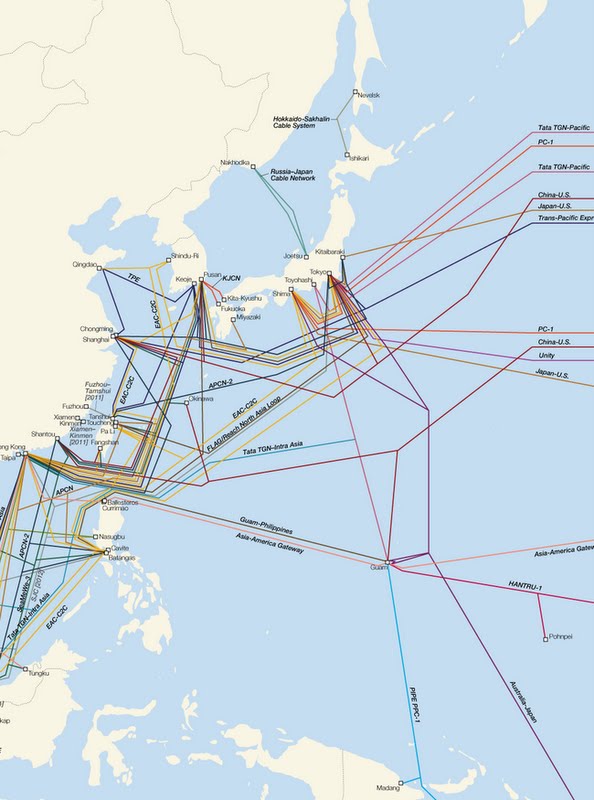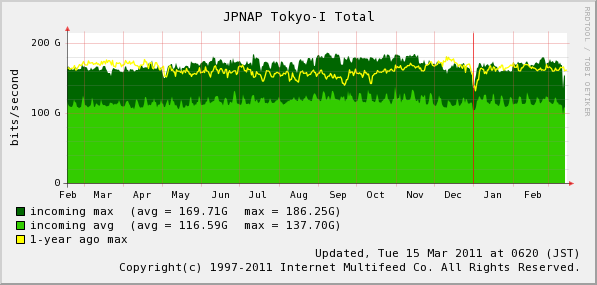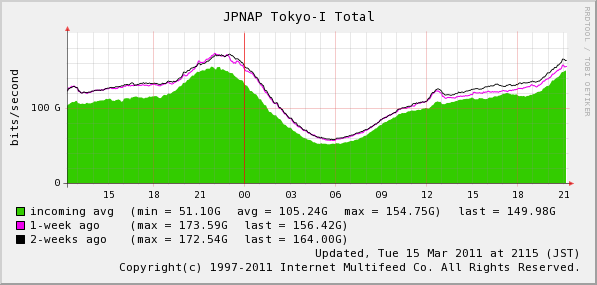The Internet in Japan turned out to be amazingly tenacious
 Some trunk links connecting Japan with Asia and America land on pivot points at Aigigaur and Kitaibaraki north of Tokyo. Unfortunately, they were not far from the epicenter of the earthquake (see diagram).
Some trunk links connecting Japan with Asia and America land on pivot points at Aigigaur and Kitaibaraki north of Tokyo. Unfortunately, they were not far from the epicenter of the earthquake (see diagram).At first, everyone saw that the Network was working almost without failures: traffic dropped by only 10–15%. The impression was that the damage to the infrastructure was minimal. However, new data collected by Telegeography, a research company, indicate a rather serious scale of problems: six main communication channels are damaged or out of service.
- Asian Pacific Cable Network 2 (APCN-2), which unites China, Hong Kong, Japan, South Korea, Malaysia, the Philippines, Singapore and Taiwan. The absence of a signal in APCN-2 is confirmed by sources in Taiwan, and the Chinese operator China Unicom reported damage to "two or three cables."
- Pacific Crossing West and Pacific Crossing North are out of order.
- PacNet reported disconnecting East Asia Crossing (EAC) network segments.
- Korea Telecom has reported damage to the trunk cable segment from Japan to the USA.
- NTT reported damage to some segments of the Pacific Crossing 1 (PC-1) system.
The Internet in Japan operates without visible disruptions solely due to an extremely dense network infrastructure and a large number of backup channels.
')

Monitoring traffic from the JPNAP service shows only a relatively small decrease in activity, comparable to that of the New Year. Average traffic per day (incoming avg) is 105.24 Gbps, while the average for the year is 116.59 Gbps.


Source: https://habr.com/ru/post/115507/
All Articles